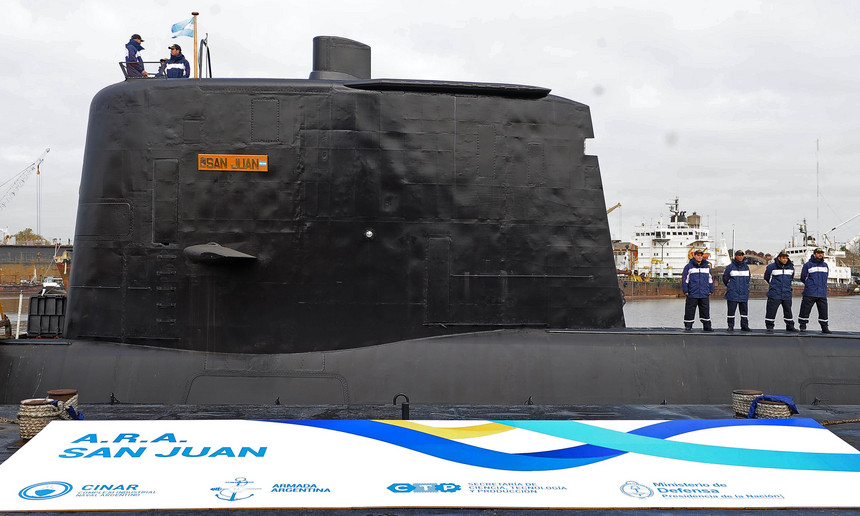Search for missing submarine counts on the participation of 12 countries

The time to find alive all 44 crew members of the [VIDEO] ARA San Juan submarine ends this Wednesday, the 22nd, because the vessel only had oxygen for 7 days and 7 nights. Relatives of these crew members are living hours of anguish waiting for news. Several countries have mobilized, among them the United States, England, Spain, France, Germany, Norway, Italy and the continent's neighbors, such as Brazil, Chile, Peru and Uruguay, counting on 4,000 troops in boats and airplanes in an area of almost 500 thousand km². However, the operations are hampered by rough seas, as the Argentine authorities explain.
According to the Argentine newspaper Clarín, a sounding signal of a metallic object was apparently detected on the high seas, but no government or navy authority confirmed the information. Still according to the newspaper, a fleet is heading towards the signal. The signal coincides with information from the US Navy, which located traces of heat to a certain depth. A preventive alert operation was organized in local hospitals should rescue take place.
ARA San Juan leaves Ushuia, south of the country, after a surveillance exercise, and lost communication on its return to the base in Mar del Plata to the north.
Other cases of submarine rescue
Throughout history we have had other episodes similar to Russian and American submarines; see: #Argentina
SQUALUS (1933): In 1939, Squalus, an American submarine, sank when it was near the coast of New Hampshire. While the ship was submerged, water entered some compartments and killed 26 crew members of 59 people.
PACOCHA (1988): The submarine USS Atule collided with the Japanese fishing vessel Kiowa Marú, near the port of Calla, in 1988. The accident opened a fissure of more than two meters in the boat, that soon sank in the sea. Of the 52 crew members, 8 died during the sinking.
KURSK (2000): Russian nuclear submarine K-141 Kursk sank with his staff of 118 people in 2000, while sailing in the waters of the Barents Sea in the Arctic Ocean. The bodies of 115 occupants of the submarine were rescued.
PRIZ AS-28 (2005): Russian mini rescue submarine Priz, with seven crew members on board, was attached to a metal cable at a depth of 190 meters, near the Kamchatka peninsula in the Pacific Ocean. The rescue was successful and managed to bring the vessel back to the surface. All the crew survived.